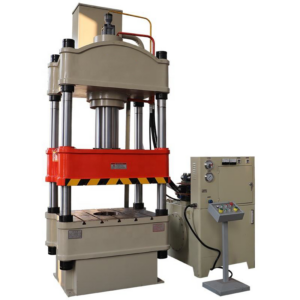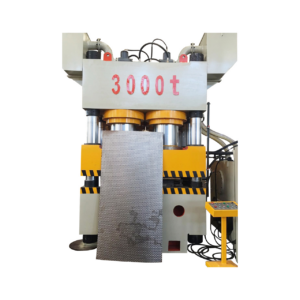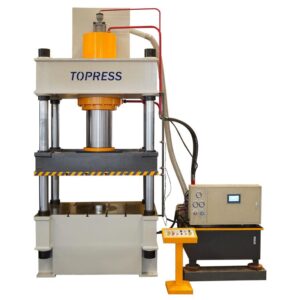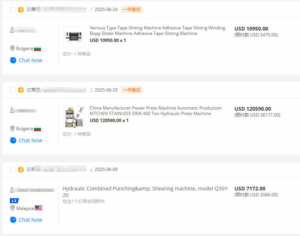Hydraulic stretching machines utilize oil pressure to drive pistons, stretching and forming metal materials. These machines include double-action sheet metal stretching machines, four-column hydraulic stretching machines, and frame-type hydraulic stretching machines, each serving different industrial needs with unique advantages.
Main Types and Technical Parameters
Double-action four-column hydraulic stretching machines stand out for their simplicity, cost-effectiveness, and practicality. For instance, the YSA-W series CNC hydraulic double-action stretching machine combines hydraulic and mechanical principles. Its force-amplifying mechanism for the blank holder minimizes energy consumption while enabling adjustable blank holder force.
The YSA100/330-W model offers a stretching force of up to 1000 kN and a mechanical blank holding force between 120 to 240 kN. The product height adjusts from 0 to 330 mm, and the machine completes 5-8 cycles per minute. With a maximum opening height of 800 mm and a worktable of 1000 x 800 mm, it features a 15 kW motor. The machine weighs around 6.5 tons, and the hydraulic system uses No. 46 anti-wear hydraulic oil to ensure reliable operation.
Frame-type thin plate stretching hydraulic presses boast a monolithic frame structure, providing high rigidity and resistance to eccentric loads. They operate based on Pascal’s principle, where a hydraulic pump converts mechanical energy into oil pressure. This pressurized oil powers the hydraulic cylinder, which applies force to stretch the metal.
For example, the YW27-315T frame-type hydraulic sheet metal stretching press generates a nominal force of 3150 kN, with a maximum operating pressure of 25 MPa. It supports adjustable slide speeds: 300-400 mm/s for descent, 10-30 mm/s for pressing, and 300 mm/s for return stroke. The worktable spans 2000 x 1200 mm, and the machine features a 22 kW motor, controlled precisely by a PLC system.

Special Applications and Operating Principles
Hydraulic bolt tensioners excel in the disassembly and installation of large bolts. These tools consist of a hydraulic pump, high-pressure hose, pressure gauge, and tensioner. The pump sends oil to the cylinder, creating the tensile force required to stretch the bolt. Once the nut tightens, the load is released, completing the preload.
The hydraulic bolt tensioners come in four types: general-purpose, interchangeable tensioner head, single-pole reset, and double-pole reset. These operate at 150 MPa, each for specific applications. For example, the universal hydraulic bolt tensioner can apply between 150 kN and 15,000 kN of tension. It accommodates bolts from M36 to M400, with an accuracy of ±2%.
The BOLTPRO 15000 hydraulic bolt tensioner can apply up to 1,500 tons of tension. It features a 50 mm piston stroke, a spring-loaded return mechanism, and a quick-release self-sealing hydraulic joint. Operating with No. 32 hydraulic oil, the unit weighs 85 kg and runs on a 3 kW electric hydraulic pump. For large bolt groups, operators can synchronize multiple tensioners using a central control unit, ensuring uniform tensioning with an accuracy of ±0.5 mm.



